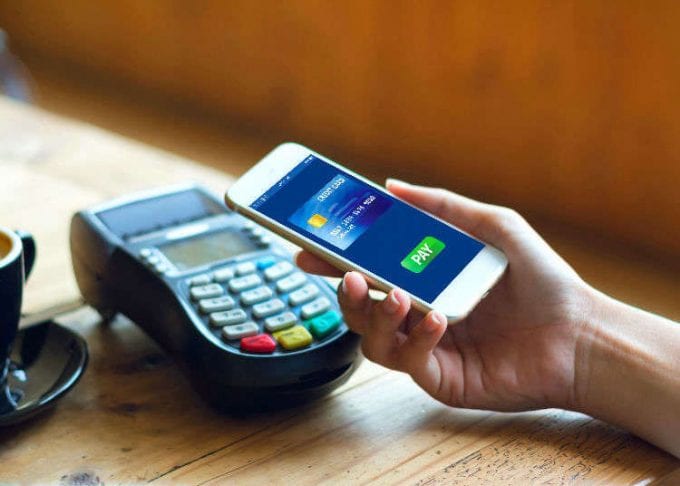COVID-19 has caused one of the most significant disruptions to life in living memory. For many businesses, it has been bad news; they’ve had to close premises, furlough staff, and in the worst cases, they’ve shut down their businesses for good.
However, this isn’t the full picture. Some businesses are surviving and even flourishing because they have adapted how they work to the times, and they are offering a service that solves problems for customers today. The outbreak of COVID-19 has made it very challenging for businesses to survive. But some businesses are able to continue their operations by changing some of their processes.
Here are eight trends that look set to continue after the pandemic.
1. Rise in eCommerce

While online shopping isn’t new, the closure of non-essential stores has meant it’s been the only option for securing certain supplies during the lockdown. Many people have tested the waters of online shopping for the first time and they have enjoyed its convenience. At the same time, many existing online shoppers have increased the frequency of their online buying.
As stores are now gradually reopening around the world, it’s likely that a proportion of this increased online activity is here to stay; in some cases, driven by convenience, and in others through fears of busy places. Businesses must invest in great online customer experience to remain relevant and profitable.
Because of this pandemic, more and more customers from different parts of the world are now paying more attention to their safety, which is something that they can continue to observe if they do all of their shopping online. Through eCommerce, customers no longer have to make any physical contact with businesses just to buy products. They can simply place an order online and wait until their orders are delivered to their doorstep.
2. Increased focus on technology

For some businesses, the shift to online working and customer servicing was smooth; they were already well on this trajectory. A lot of businesses already have their own website that accepts orders even before this pandemic started. However, for others, it showed how underprepared they were for changes to their operations.
Businesses have recognized that remote working technologies and online purchasing and servicing options for their customers are critical investments to make and to maintain, for the long term.
Because of the pandemic, small and startup businesses are now obliged to focus on technology, and people can expect to see the same even after post-COVID. Aside from creating websites, businesses are also investing in other high-tech services, such as delivery and cashless payments.
3. Homeworking

Many employees have been working from home since the end of March 2025. While this has presented some challenges in juggling work and home lives, many businesses and employees have seen positive effects. There now seems to be less need for expensive office space, no long commutes, more family time, and all without a drop in productivity levels; in some cases, productivity has increased.
Working from home will likely remain a regular part of working life for many companies, and there will be less of a taboo about staying at home if you are sick. Time will tell if this will lead to increased virtual monitoring of how employees are spending their time while working from home.
Homeworking has benefitted both employers and employees during the outbreak of the virus, which is why this trend will be likely followed by businesses even during post-COVID.
4. Virtual meetings and events

Video conferencing tools such as Zoom have become a regular feature of most working lives during the lockdown period. Companies have realized just how much can be achieved virtually, which reduces lost time and the costs associated with travel.
Companies have also successfully run live virtual events via these platforms, which has given them access to more significant numbers of participants, who would not have been able to travel to an in-person setting. While there’s no doubt that in-person events have an atmosphere that is difficult to recreate online, the increased convenience and cost-savings could mean that virtual events will remain a key marketing strategy for the long term.
5. More uses of flexible workers

The pandemic has highlighted the benefits of businesses having a workforce that is quick and easy to scale up or down in response to demand. Hiring permanent staff takes time and letting them go is expensive and emotionally taxing.
Companies will continue to be more open to freelance and contractor support. This kind of working arrangement can benefit the employees as they can now work during their most convenient times, making it easier for them to manage other responsibilities such as home maintenance and parenthood. Offering flexible hours to employees can also benefit employers as they’re not obliged to provide any other benefits other than paying them per hour or per output submitted.
6. Robot workers

A more controversial topic is the impact that COVID-19 will have for the longer term on robotics in the workplace. We’ve understood the benefits of robots in highly routinized work environments for a long time; they don’t need breaks, sick days, and their behavior is entirely predictable.
The pandemic has highlighted how production lines or fulfillment centers that rely on a human workforce have vulnerabilities, and we may see increased investments in robotics for services such as deliveries and cleaning.
7. Enhanced cleaning of physical premises

The easing lockdown has meant increased amounts of deep cleaning in physical stores and offices as they receive customers and workers again. These measures are likely to continue for some time, and certainly while concerns about a second wave of the virus are live.
8. Cashless payments

Cash appears to no longer be king, with data from Nationwide showing a 44% increase in contactless payments since lockdown began. Consumers have opted for card payments due to concerns about the hygiene of cash, due to increased online shopping and to support social distancing measures.
It’s critical for businesses with a physical presence to have a card machine that accepts contactless payments for lower value items, or a card reader, as fewer consumers carry cash.
For online trading, a reliable eCommerce payment gateway that your customers can trust and use seamlessly is a must. Utilising a payment gateway, which is secure and compliant, is essential to ensure cardholder data remains protected and encrypted during the transaction process. Service providers like MYHSM can provide cloud-based infrastructure to achieve this.
Business owners should select a payment solution provider who can offer all the different payment options that their business needs while also providing superior reliability and fraud-checking. For example, payments experts UTP Group, are backed by a traditional bank that completes ongoing fraud checks.
Conclusion: a new normal is emerging
It seems likely that the post-pandemic world will have a new normal, rather than fully returning to life as we used to know it.
There have been some positive aspects that we want to retain, such as increased flexible working options and virtual meetings, the convenience of electronic payments, and enhanced online offerings from businesses.
The swing towards a cashless society is accelerating, and investments in new technologies to solve problems in the post-pandemic world are likely to remain high on businesses’ priority lists.









